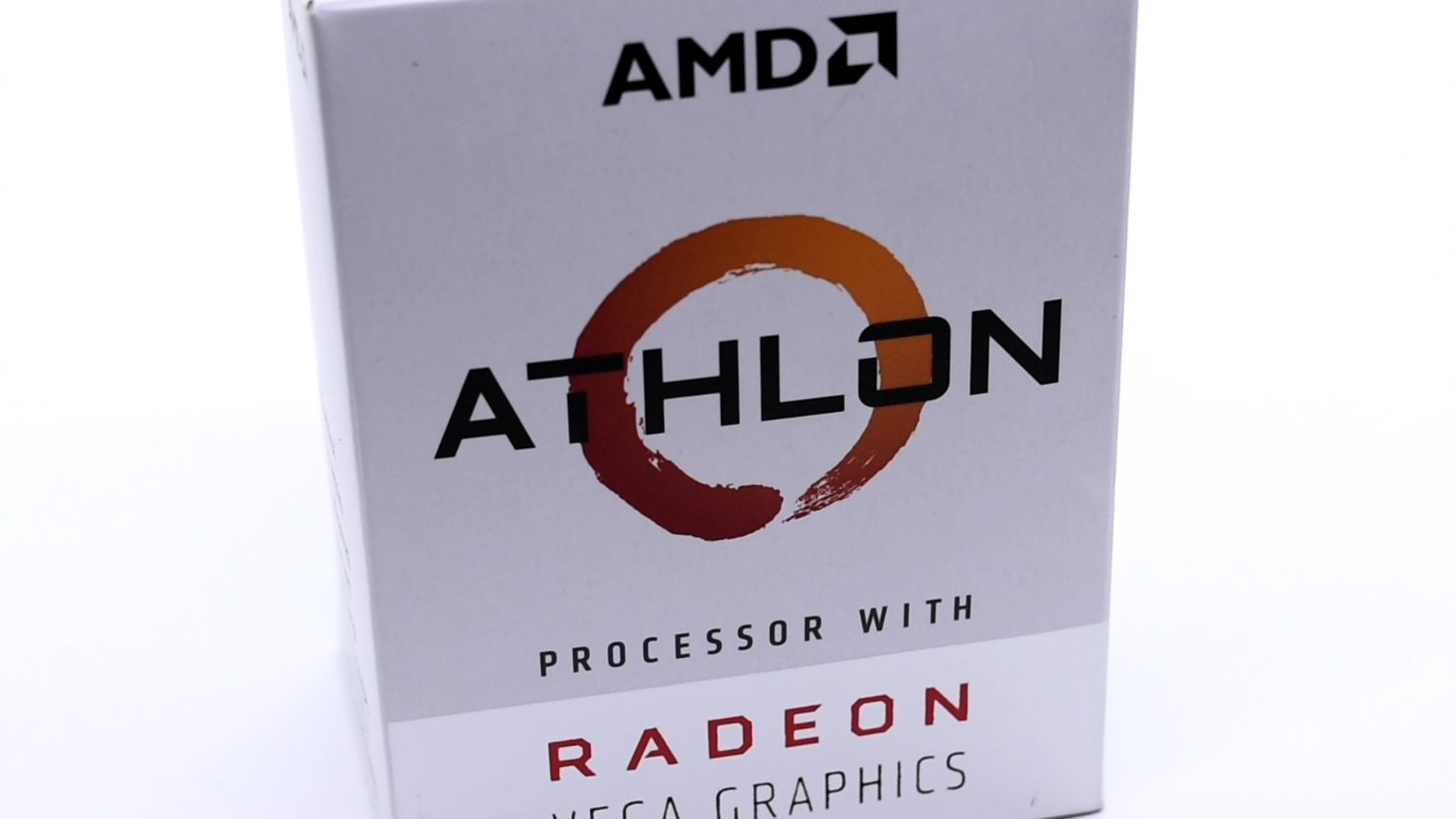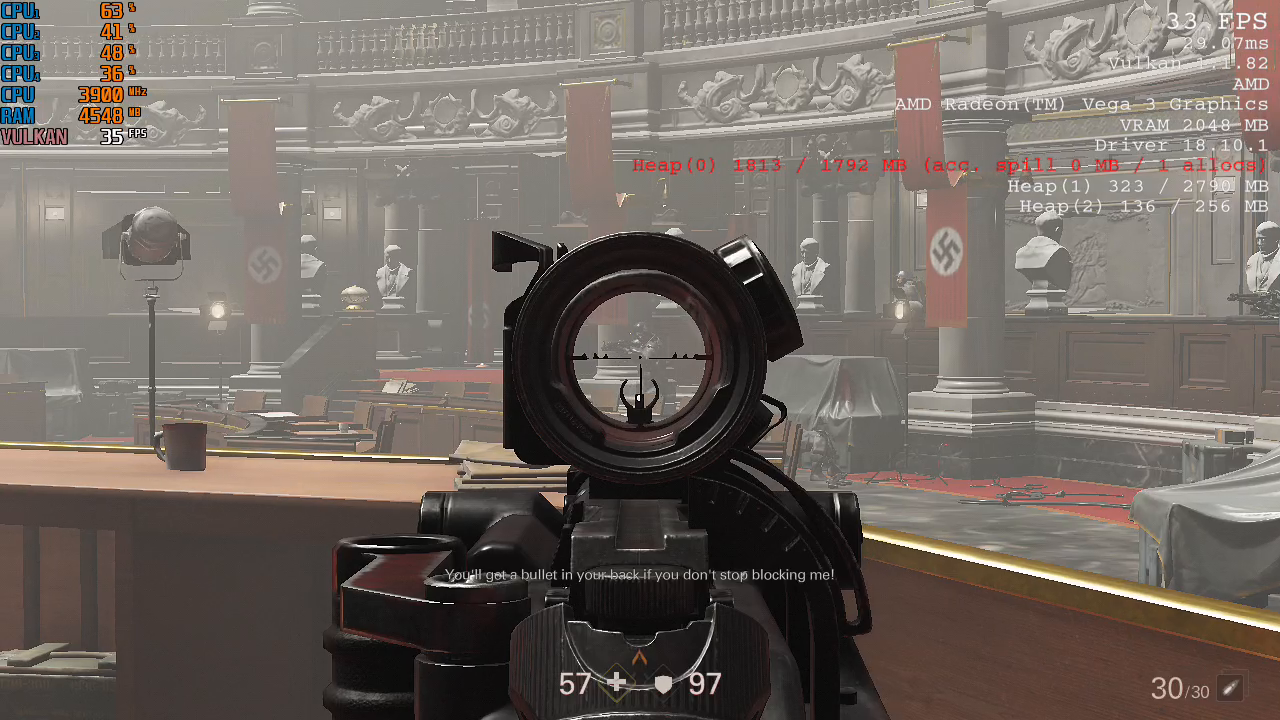Gaming on the AMD Athlon 200GE: It Can Play, Even at 4K
At just $55 (47£), the Athlon 200GE is the cheapest CPU using AMD's Zen architecture. When Tom’s Hardware recently reviewed the AMD Athlon 200GE, we were impressed with its amazing value and surprisingly-strong performance for the money. But just what is it like to actually play games on this two-core, four-thread processor and its integrated Radeon Vega 3 graphics?
Based on our in-depth testing, shown in the video below, we can say that the Athlon 200GE is capable of handling some demanding current games at modest settings, and it can even scale up to 4K on some older, less-intense titles.
Even though AMD ships the Athlon 200GE as a locked CPU, the latest BIOS version on MSI motherboards with a chipset of B350 or better allows for multiplier Overclocking. A week after the discovery, Gigabyte updated its own bios to include the overclocking functionality. And most recently, Asus has gotten into the unlocking game with the 200GE. I was able to overclock my unit from 3.2 GHz to 3.9 GHz on a stock cooler with good temperatures.
To find out just how well the Athlon 200GE can game, I paired it with an MSI B350 Gaming Plus motherboard and 8GB of dual-channel RAM at 2666 MHz (the maximum supported speed) and tested a number of demanding titles at both stock and overclocked settings. I also tested this CPU paired with a discrete AMD Radeon RX 550 graphics card to see how it fared.
Games on the Integrated Vega GPU
While the integrated Radeon Vega 3 graphics here is not exactly at the level of a discrete GPU, it can still do an amazing amount of gaming on its own.
Summary for Integrated Graphics
| Game | Settings | Stock FPS | Overclock FPS |
| Counter-Strike Global Offensive | Low- 1280x720 | 121 | 121 (GPU bottleneck) |
| Counter-Strike Global Offensive | Low - 1920x1080 | 60 | 60 (GPU bottleneck) |
| Overwatch | Low - 1290x720(75% Resolution Scale) | 50-60 (Some stuterring) | 60 |
| Star Wars Battlefront 2 | Low - 1290x720 | 45 | 60 |
| Row 5 - Cell 0 | Row 5 - Cell 1 | ||
| Wolfenstein II: The New Colossus | Low - 1280x720 | 28-30 | 28-30 (GPU bottleneck) |
| Row 7 - Cell 0 | (Shadows disabled) | Row 7 - Cell 2 | |
| Battlefield V | Low - 1280x720 (0.5 Internal) | 25 - 30 fps | Not Tested |
| Fallout 76 | Custom Ultra Low - 960x540 | 40 fps | Not Tested |
For example, the always popular Counter-Strike: Global Offensive on the community benchmarking map, on lowest settings and 1280x720 (but multicore rendering on) manages to pull an impressive average of 121 fps with the 200GE, and close to a 60 fps average on 1080. There was no difference before or after overclocking.
For a better example of where overclocking can help, we can look at Overwatch. On the lowest settings, and a resolution of 1280x720 with a 75% resolution scaler, the game can almost maintain a 60 fps lock with a CPU bottleneck, which in my experience means that the game can micro-freeze at certain unexpected moments. A 45 or 50 FPS lock is easily maintained. Overwatch can be a bit CPU intensive, especially on dual-core CPUs, so this is not a huge surprise.
Get Tom's Hardware's best news and in-depth reviews, straight to your inbox.
However, after the overclock I was easily able to play Overwatch at 60 fps with no freezes, so this is a good test to show what the Athlon can do in the right conditions.
As a side note, this is the setup that I have used to stream Overwatch on YouTube (via a capture card) and it continues to be reliable after hours of playtime. Overwatch is designed with readability in mind, so even with a lower resolution scaler, it remains a fantastic experience.
Another surprising case is Star Wars: Battlefront 2. Games on the Frostbite engine tend to require at least a competent quad-core CPU and a dedicated GPU, but the Athlon with its integrated GPU can easily reach a 60 fps lock on lowest settings with 50% resolution scaler at 1280x720 if overclocked. On stock frequencies, it can maintain a 45 fps lock on the same settings.
Another interesting case study is Wolfenstein II: The New Colossus. This game uses the id Tech 6 engine and runs exclusively in the Vulkan rendering API (which Vega can do). It can provide amazing performance on gaming GPUs, but can struggle a bit when there's less than 2GB of VRAM. Given that iGPUs has no VRAM whatsoever (it uses regular RAM as VRAM) this usually presents a problem, but the Athlon manages to do fine with some help.
After dropping all the settings to the lowest possible, you can open a developer console with the tilde ( ~ ) key usually under Esc. Once there, the command "r_ShadowAtlasWidth 8" will disable most shadows.
After this tweak, on 720p, the Athlon is able to keep a 28-30 FPS average on some of the most intense fight scenes in the game. The lighting of the game will look dramatically wrong and you might get an “out of VRAM” warning, but the game soldiered on incredibly well, even under fire. Since the problem is a bottlenecked GPU, overclocking does not make a difference.
OnBattlefield V, one of the newest AAA games around, the Athlon managed a barely-playable 25 to 30 fps at low settings with 1280 x 720 resolution (0.5 scale). On Fallout 76, the frame rate was a smoother 40 fps, but only at custom low settings and 960 x 540 resolution.
For such heavy games, these are impressive results. Now, let's take a look at what happens when you pair the Athlon 200GE with a low-end dedicated GPU like the AMD Radeon RX 550.
With a Dedicated GPU
The RX 550 is a 2017 AMD GPU that's comparable to a GTX 1050. It can occasionally be found at a low-enough price to make for an excellent budget build. At press time, an RX 550 was priced at approximately $79 (£62).
Summary for Athlon 200GE @ 2.9 Ghz + RX 550
| Game | Settings | FPS |
| Star Wars Battlefront 2 | Low - 1920x1080(80% Resolution Scale) | 60 |
| Assassin's Creed: Origins | Medium - 1920x1080(70% Resolution Scale) | 30 |
| Assassin's Creed: Odyssey | Low - 1920x1080(80% Resolution Scale) | 30 |
With the extra power of the dedicated card, Battlefront V can now be played at 60 fps and lowest settings, 1080p at 80% resolution scale. The jump in resolution is definitely an improvement for a game of this scale.
Assassin's Creed: Odyssey and Assassin's Creed: Origins are two games running on Ubisoft's AnvilNext 2.0 engine that have a reputation for requiring both a powerful CPU and GPU, so they work as excellent benchmarks for many different setups.
In our particular case the Athlon 200GE, overclocked to 3.9 GHz, is actually able to average around 37 FPS on both games and is, therefore, able to keep a 30 fps lock with decent stability.
With the RX 550, this means 1080p at 70% resolution scale and Medium settings for Origins and 1080p at 80% with low settings for Odyssey. Both actually look better than you would expect and they maintain framerates on par with consoles.
When benchmarking the Athlon 200GE for our review, Paul Alcorn tested this CPU with a GTX 1080 card and saw it deliver very playable average frame rates in Civilization VI, Far Cry 5, Hitman, Middle-earth: Shadow of War, Warhammer 40,000 and Project CARS 2.
However, that was done specifically to test the CPU's ability to handle high-end gaming. We don't think many people would (or should) pair a $55 (£47) CPU with a GPU that costs 6 or 7 times as much.
Summary for Athlon 200GE + GTX 1080
| Game | Settings | Stock FPS | OC FPS |
| Civilization VI | High - 1920 x 1080 (DX12) | 48.9 | 55.7 |
| Warhammer 40,000: Dawn of War III | Maximum - 1920 x 1080 (DX11) | 58.9 | 61.3 |
| Far Cry 5 | Ultra - 1920 x 1080 (DX11) | 61.7 | 69.2 |
| Hitman | Ultra - 1920 x 1080 (Direct3D12) | 47.7 | 52.5 |
| Middle-earth Shadow of War | Ultra - 1920 x 1080 (DX11) | 70.1 | 73.5 |
| Project CARS 2 | Ultra - 1920 x 1080 (DX12) | 55.2 | 61.1 |
4K video and Gaming
The AMD Athlon 200GE has no problem playing 4K videos and, shockingly, it can even run some 4K games. For a local video playback test I used Tears of Steel, from the Blender Open Movie Project, at full 4K and 73244 kbps. For a streaming test I used some sample 4K footage from YouTube channel “4k Eye”. Both played smoothly.
Just for fun, I tried playing a couple of games in full 4K. The venerable Half-Life 2, which came out way back in 2004, reached unexpected triple-digit performance at 3840 x 2160, with an average of 110 fps at low settings.
Some newer games can run at 4K on the Athlon 200GE also. On the lowest settings, Fallout 3 delivered an average of 32 FPS on all test areas. Of course, this chip is not ideal for 4K gaming, but it is interesting to see that it can still pull it off with older titles.
Bottom Line
The AMD Athlon 200GE is an interesting processor. It's a very budget oriented CPU that benefits from a modern architecture and DDR4 RAM speed to deliver more than what you would expect. Even if you're just using the integrated GPU, the Athlon can deliver 60 fps or more at decent resolutions on competitive games such as Counter-Strike: Global Offensive and Overwatch. Just make sure you use the right dual-channel RAM.
As an added bonus, you can easily overclock the Athlon 200GE with an MSI or Gigabyte, or Asus motherboard (as long as it has a B350 chipset or better) without the need for additional cooling. That means 60 fps for games such as the modern Battlefront 2 or a stable 30 fps on the latest Assassin's Creed games if paired with a low-end dedicated GPU.
Since it uses the same socket and RAM as the existing Ryzen line of CPU, the 200GE has a clear upgrade path to many powerful CPUs without changing any other components, giving it an extra advantage over an older or cheaper CPU. All that said, if you like the idea of the 200GE but are after better CPU and iGPU performance, we recommend stepping up to the Ryzen 3 2200G. It can often be found for under $100 and is a better performer on CPU and GPU fronts.








